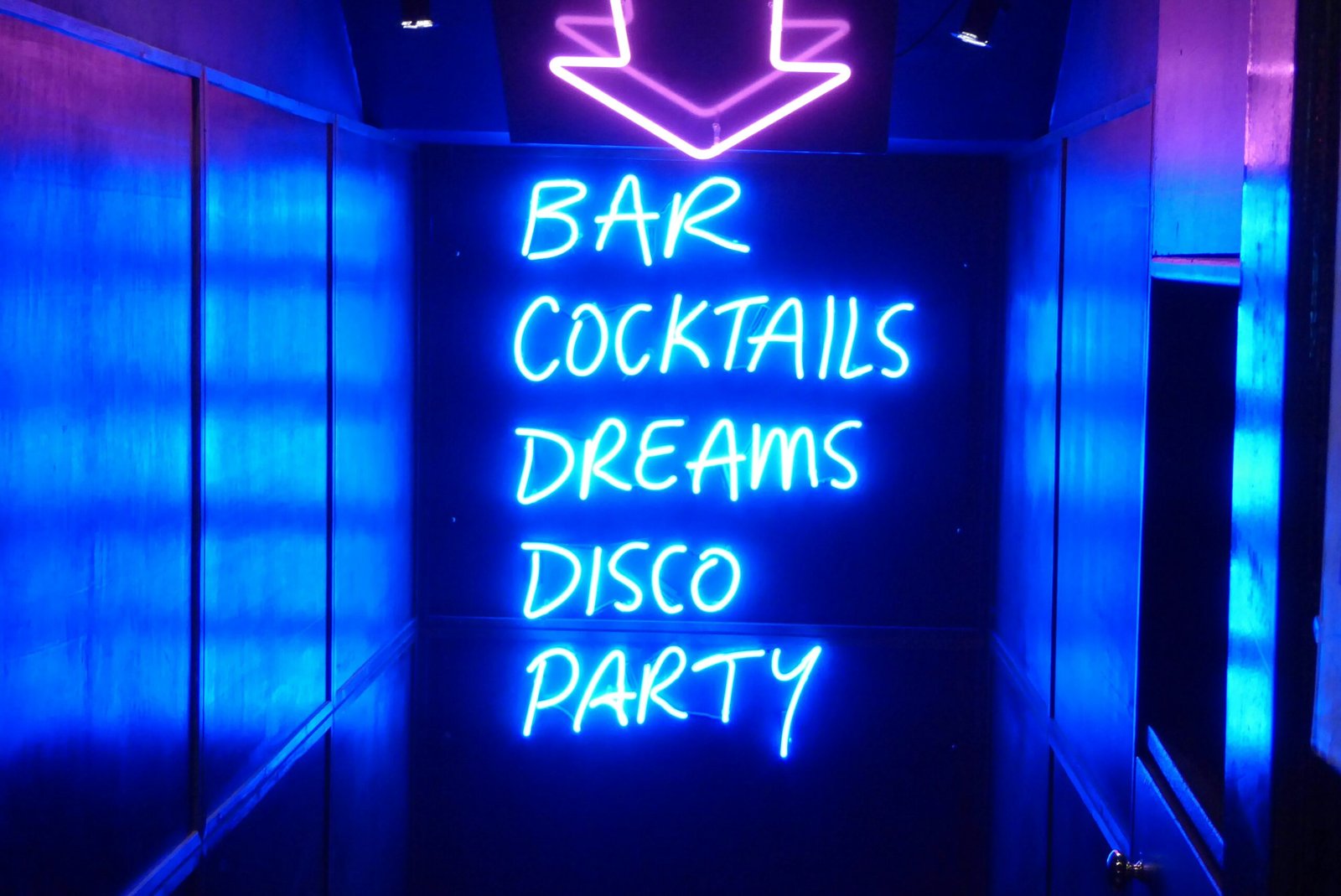
Photo by <a href="https://unsplash.com/@jannerboy62" rel="nofollow">Nick Fewings</a> on <a href="https://unsplash.com/?utm_source=hostinger&utm_medium=referral" rel="nofollow">Unsplash</a>
Introduction to Gangnam’s Nightlife
Gangnam, a district in Seoul, is renowned for its vibrant nightlife that captivates both locals and visitors alike. The allure of Gangnam lies not only in its upscale shopping and dining but also in its energetic after-hours scene. As the sun sets, the streets come alive with an eclectic mix of bars, clubs, and lounges that cater to diverse tastes and preferences. This bustling hub is known for its fashionable crowd, where glittering lights and pulsating music set the perfect backdrop for an unforgettable night out.
강남가라오케 culture of Gangnam’s nightlife is characterized by its blend of modernity and tradition. Here, patrons can indulge in everything from high-end clubs with world-class DJs to intimate bars showcasing local talent. A distinctive feature of this nightlife experience is karaoke, a popular form of entertainment that has become an integral aspect of the social fabric in Gangnam. The prevalence of noraebang, or karaoke rooms, allows friends and groups to express themselves creatively in a private setting while enjoying their favorite songs. These establishments provide a delightful escape from the hustle and bustle of the city, transforming ordinary nights into extraordinary experiences.
The harmony between dreams and reality in Gangnam’s nightlife becomes particularly evident within these karaoke rooms. Whether one is a seasoned performer or a shy novice, the atmosphere encourages individuals to let loose and revel in the moment. As laughter echoes and music fills the air, the camaraderie nurtured in these spaces fosters unforgettable memories. Gangnam’s nightlife, marked by its vibrant energy and cultural diversity, invites everyone to explore the synergy between personal aspirations and shared experiences through the world of karaoke. Thus, the stage is set for a captivating journey into the heart of Gangnam’s nocturnal adventures.
The Evolution of Karaoke in Korea
Karaoke, a beloved form of entertainment characterized by singing along to recorded music, has deep roots in South Korea, tracing back to the 1970s. Its origins can be linked to the emergence of the first karaoke machines, which allowed individuals to sing along with their favorite songs on demand. These devices quickly captured the attention of the public, transforming casual music enjoyment into a shared social experience. During this decade, the concept was primarily popularized in smaller, more intimate settings such as bars and restaurants, laying the groundwork for what would become a nationwide phenomenon.
The 1980s witnessed an exponential growth in the popularity of karaoke, particularly as technology advanced. With the introduction of video screens, enthusiasts could now view lyrics in real-time alongside the accompanying music. This innovation drastically enhanced the karaoke experience, making it more engaging and accessible. It was during this pivotal decade that karaoke began to infiltrate the social fabric of South Korean culture. Many establishments adapted to house karaoke rooms, known as ‘noraebangs’, catering to groups looking for a unique blend of music and social interaction.
As the 1990s progressed, so did the evolution of karaoke. The integration of advanced sound systems and an extensive selection of songs further enriched the experience. It transitioned from a niche pastime into a key element of social gatherings, celebrations, and even corporate events. By the time the new millennium arrived, karaoke had firmly established itself as a vibrant aspect of nightlife in urban areas, particularly in Gangnam. Characteristics of this upscale district, such as its fast-paced lifestyle and penchant for entertainment, have rendered karaoke not just a hobby, but a vital component of social bonding and cultural expression within the community.
Exploring Gangnam’s Top Karaoke Spots
Gangnam, a vibrant district in Seoul, is renowned for its lively nightlife and entertainment options, particularly its array of karaoke venues, known as ‘noraebangs’. These establishments vary widely, offering both traditional experiences and modern twists that cater to a diverse clientele. Among the most popular noraebangs, one can find rooms equipped with state-of-the-art sound systems, extensive song selections, and unique themes that enhance the karaoke experience.
One standout venue is “Luxury Noraebang,” which presents a high-end karaoke experience complete with private rooms styled for comfort and elegance. Patrons can enjoy a range of classic and contemporary Korean songs alongside international hits, all while indulging in premium beverage services. The pricing here tends to be on the higher end but reflects the superior atmosphere and quality service.
For those seeking a more traditional setting, “Sinchon Karaoke” offers a nostalgic vibe, reminiscent of the older noraebangs. Guests can choose from a robust selection of Korean ballads and pop songs, often in a more casual and familiar environment. Moreover, reasonable pricing makes it a favorite among students and young adults looking for an affordable night out.
In addition to these traditional offerings, innovative establishments like “Themed Karaoke” provide themed rooms that transport guests into unique settings, ranging from classic movie scenes to fantasy worlds. Such features add a layer of creativity to the karaoke experience, making it appealing for groups celebrating special occasions.
When visiting these karaoke spots, it is advisable to make reservations in advance, especially on weekends, as they are popular among both locals and tourists. Overall, whether one is seeking a luxury getaway or a nostalgic night out, Gangnam boasts a variety of noraebangs that promise to satisfy any karaoke enthusiast’s desires.
The Social Dynamics of Karaoke Nights
Karaoke nights in Gangnam have emerged as vibrant social events that foster connections among friends, colleagues, and even strangers. These gatherings provide a unique opportunity for individuals to express themselves through music, allowing for shared experiences that strengthen relationships. The concept of bonding over song selection and performance is integral to understanding the social dynamics at play during these evenings.
One of the critical elements of karaoke is the way it encourages vulnerability among participants. Standing in front of an audience, whether familiar or not, can evoke a mix of excitement and apprehension. This willingness to take the stage often leads to increased camaraderie, as individuals rally around each other’s performances, offering support and encouragement. The act of singing—whether it is a powerful ballad or a humorous pop tune—can break down barriers, creating a sense of unity among participants.
Many patrons of Gangnam’s karaoke venues recount personal anecdotes that highlight the transformative nature of these nights. For instance, a group of colleagues may initially attend for a casual outing, but as they share in the joy of singing their favorite tunes, they develop deeper connections that extend beyond the workplace. Strangers have also formed lasting friendships through shared laughter and memorable performances, illustrating how karaoke serves as a social equalizer.
Moreover, karaoke nights emphasize the importance of expression, allowing individuals to showcase their personalities and emotions. Whether it is through passionate renditions of classic songs or comical performances, participants share insights into who they are beyond the confines of daily life. This theme of self-expression not only enhances the cohesiveness of the group but also fosters an atmosphere where people feel comfortable and confident. In essence, karaoke nights in Gangnam encapsulate the spirit of social interaction, paving the way for memorable experiences and deepened relationships.
Karaoke Challenges: Behind the Mic
Karaoke, a popular pastime in many social settings, presents several challenges and pressures for performers. One of the foremost challenges is the fear of public singing, which can be a significant deterrent for those considering stepping up to the microphone. This anxiety stems from the concern of being judged by others, leading to intense stage fright. The pressure to deliver a good performance can be overwhelming, especially for novice singers who may lack confidence in their vocal abilities.
Alcohol often plays a complex role in the karaoke experience. For some, a drink or two can serve as a catalyst, reducing inhibitions and bolstering courage to take the stage. However, it is crucial to recognize the fine line between enhancing enjoyment and impairing performance. The effects of alcohol can sometimes lead to overconfidence, resulting in a lack of preparation and an inability to deliver a coherent performance. In contrast, for others, alcohol may heighten anxiety, making the thought of performing even more daunting.
The psychological aspects of karaoke cannot be overlooked. Many individuals face the challenge of self-doubt and fear of embarrassment. Nevertheless, various coping mechanisms can help singers manage these emotions. Support from friends and the encouragement of the audience can alleviate stress, transforming the performance from a solitary struggle into a communal celebration. Furthermore, those who confront their fears often experience a cathartic release, finding joy and fulfillment in the act of sharing music with others. Overcoming the psychological barrier of public performance can lead to a sense of accomplishment and connection, reaffirming the social joys that karaoke nights bring.
Cultural Significance of Karaoke in Korea
Karaoke holds a prominent place in Korean culture, acting as a vibrant medium for social interaction, emotional expression, and entertainment. It transcends age and social boundaries, providing a platform where individuals can gather to celebrate communal enjoyment. This shared escape from the pressures of daily life resonates deeply within the socio-cultural fabric of Korea, emphasizing the importance of community and harmony. In a society that often prioritizes working hours over leisure, karaoke serves as a vital outlet for relaxation and joy.
The act of singing in karaoke is not merely a form of entertainment; it reflects the cultural values inherent in Korean society. Whether it is a celebration of a significant life event, such as a birthday or a promotion, or simply a casual gathering, karaoke symbolizes togetherness. It enables participants to forge stronger bonds while forging memories that enhance their relational dynamics. The low-pressure environment encourages openness, bridging gaps between generations and creating opportunities for dialogue among people from diverse backgrounds.
Moreover, karaoke is a powerful medium for emotional expression. Participants often choose songs that resonate with their personal experiences, allowing them to share feelings of joy, sorrow, or nostalgia. This cultural phenomenon underscores the role of music as a universal language that unites individuals, regardless of personal histories or social status. In this regard, karaoke can serve both as a mirror reflecting one’s emotional state and as a means of showcasing identity and social standing within groups.
As the popularity of karaoke continues to grow, it remains a cherished aspect of Korean entertainment, reinforcing the significance of community engagement and social cohesion in today’s increasingly fast-paced world. By embracing karaoke, Koreans are not only indulging in entertainment but are also preserving and celebrating their rich cultural heritage.
Famous Karaoke Anthems in Gangnam
Gangnam, known for its vibrant nightlife, is synonymous with karaoke culture, making it a preferred destination for both locals and tourists. As patrons indulge in the joy of singing, certain songs emerge as favorites, reflecting the eclectic taste of the crowd. Among these, the iconic Korean ballad “I Am Happy” by the legendary vocalist, Kim Bum-soo, stands out. This sentimental song resonates with the audience, evoking emotion and making it a staple during karaoke sessions, where singers often aim to showcase their vocal prowess.
Furthermore, the infectious energy of “Gangnam Style” by Psy has entrenched itself as a song of choice, not just in Korea but globally. Released in 2012, it quickly became a viral phenomenon, and its catchy beat inspires a lively atmosphere that invites group sing-alongs. Its significance in popular culture and the experience of performing it in karaoke venues encapsulate the essence of Gangnam’s fun-loving spirit.
International hits also hold a significant place in the hearts of karaoke enthusiasts in Gangnam. Songs like “Shape of You” by Ed Sheeran and “Bohemian Rhapsody” by Queen routinely dominate song selection lists, appealing to a wide audience. The universal themes of love and adventure in these tracks resonate with many singers, making them perennial favorites. As trends in music selection evolve, it becomes clear that certain anthems continue to bridge generations, showcasing both nostalgia and contemporary trends.
Overall, the famous karaoke anthems in Gangnam reflect a diverse range of musical preferences, highlighting both local and international influences. Whether it is nostalgic Korean classics or modern pop hits, these songs provide a backdrop for unforgettable nights filled with laughter and camaraderie, ensuring that karaoke remains a beloved pastime in this bustling district.
Karaoke Etiquette and Tips for Beginners
Karaoke, a beloved pastime that brings people together, requires a certain etiquette to ensure everyone has an enjoyable experience. For beginners, understanding the dos and don’ts can significantly enhance their confidence and enjoyment. Firstly, it is essential to respect the stage and the performers. Wait for your turn patiently and refrain from interrupting others mid-performance. Applause is always welcomed, and supportive cheers can boost a performer’s morale.
Choosing the right song is crucial for a successful karaoke night. Beginners should opt for songs they are familiar with and that suit their vocal range. Selecting popular hits that the audience can sing along to is a good strategy as it encourages participation and creates an engaging atmosphere. Additionally, checking the karaoke book for easy-to-sing tracks can ease early nerves and provide a sense of comfort.
For those feeling anxious about performing, it can be helpful to practice breathing techniques or even warm up with a few vocal exercises before stepping up to the microphone. Engaging in brief discussions with friends about song selections can also alleviate nerves and build excitement. Remember, karaoke is as much about entertainment and enjoyment as it is about vocal ability.
Lastly, consider the group’s dynamics and aim to foster a fun environment. Encourage others to participate by highlighting their strengths and offering compliments. When everyone feels included, the karaoke experience becomes more memorable and enjoyable for all involved. Being mindful of these etiquette tips and techniques can ensure that both beginners and seasoned performers have a delightful night filled with melodious fun. In conclusion, a little preparation, respect, and enthusiasm can make your karaoke night an unforgettable experience.
Conclusion
The vibrant atmosphere of Gangnam’s nightlife offers a unique reflection of modern South Korean culture, with karaoke standing at the forefront of this experience. Throughout our exploration of karaoke, it becomes clear that this activity transcends mere entertainment. It serves as a bridge between dreams and reality, allowing individuals to express their aspirations, emotions, and creativity in a supportive environment. People of all ages and backgrounds congregate in karaoke rooms, sharing the joy of music while forging connections with one another.
Karaoke in Gangnam is not just a pastime; it encapsulates the spirit of community and camaraderie. From friends coming together to belt out their favorite tunes to strangers bonding over shared musical tastes, every session becomes a microcosm of social interaction. The act of singing transforms personal dreams into collective experiences, reinforcing the idea that music has the power to unite people from diverse walks of life. In this way, karaoke serves as both an individual expression of passion and a shared celebration of community, exemplifying the vibrant culture that Gangnam is known for.
As we reflect on the significance of karaoke in Gangnam, it is evident that the activity fosters an unparalleled sense of belonging and joy. Embracing karaoke allows individuals to step outside their comfort zones, empowering them to unleash their inner performers in a safe and enjoyable setting. By participating in this cherished activity, one not only indulges in the magic of music but also becomes part of a larger narrative that celebrates the essence of Gangnam’s nightlife. Thus, embracing karaoke offers a valuable opportunity to connect with others, bridging dreams and reality through the universal language of music.






